Invasive Plant Profile: Thorny Olive (Elaeagnus pungens)
By Michael Gosselin, Biological Science Technician at Cape Hatteras National Seashore
What is it?
Thorny Olive is a fast-growing, evergreen shrub that is native to Asia. It was introduced in the United States in 1830 as an ornamental. It is typically planted along highways and used in landscaping.
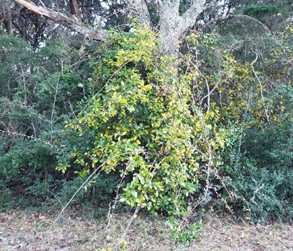
Thorny Olive can grow upwards of 25-feet tall, having multiple dense branches. Long shoots typically grow out of the top and sides of the shrub. The bark is rough and brown with thorns, while smaller branches are brown with scales. The thick leaves of the shrub grow in an alternate arrangement and have silver undersides with brown specks. The plant flowers in the fall, growing showy white flowers. It will typically fruit in the spring, producing red oblong fruit that is covered in silvery-brown scales.
Where does it grow?
Thorny Olive can grow in multiple different soil types and habitats. Here at Cape Hatteras National Seashore, we typically find it along roadways and in areas adjacent to private property that has Olive planted as part of its landscaping. Areas along Highway 12 and along Lighthouse Road in Buxton are hotspots.
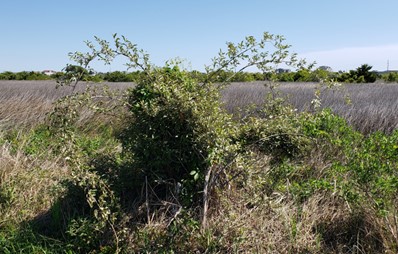
How does it impact Cape Hatteras National Seashore?
Thorny Olive is a fast-growing plant that will out compete native plants for limited resources and take over an area resulting in reduced biodiversity and altered wildlife habitat. The shrub is very tolerant of both drought and salt, making Cape Hatteras National Seashore a great habitat for it. The long shoots that grow out of the plant will intertwine with other plants, using them to grow upwards and choke out the other plants.
What are the treatment methods used for Thorny Olive?
Here at Cape Hatteras National Seashore, we have used a number of treatment methods to try and control Thorny Olive. If plants are small enough, they can be hand pulled or dug up with a shovel. Larger plants need to be treated with herbicides to get rid of them.
There are several ways to treat Thorny Olive with herbicides. The first is a foliar treatment, in which a backpack or hand sprayer is used to spray herbicide on the leaves of the Olive. This treatment method is limited to plants that are small enough that you can spray most of the leaves. It also cannot be performed on windy days where there is a high risk of the herbicide blowing onto native species or the applicator.
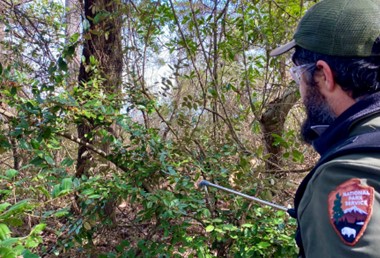
A second method is a basal bark treatment. This treatment is similar, except the herbicide is sprayed directly onto the bark on the first 12 – 20 inches of the trunk.
A third method is hack and squirt, which is very similar to basal bark. During this treatment method you make incisions into the bark of the plant and spray the herbicide directly into the incision. Once the plant is dead after these treatment methods, it can be cut down and removed.
A fourth method is to cut the stump, in which you cut down the plant completely and treat the stump immediately with herbicide. Once the Olive is cut down, the plants can be either chipped up with a woodchipper or left in place in piles to provide habitat for wildlife.
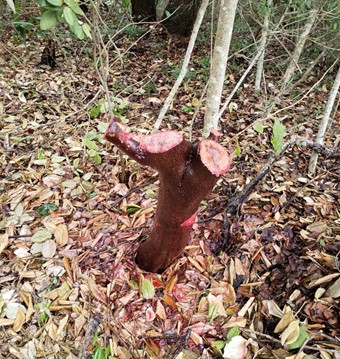
Here at Cape Hatteras, cutting the stump or hack and squirt have seemed to be the most effective treatment methods. Using additional funding from Outer Banks Forever*, starting in November 2023 through February 2024, we were able to treat about 500 square feet of thorny olive, as well as several other species here at Cape Hatteras.
Which native plants are alternatives to Thorny Olive?
There are several native plants that can be planted in place of Thorny Olive once it is removed or if someone is landscaping their yard. Here at Cape Hatteras, there are several native species of holly, such as Yaupon Holly that can be planted instead of Thorny Olive. Yaupon Holly is tolerant of both salt spray and drought and can grow in multiple different habitats. Its fruit also provides food for wildlife. Another native plant option is American Beautyberry. It too will grow in multiple habitat types but prefers full sun. Its berries provide food for native wildlife as well.
*A portion of Outer Banks Forever’s Aid to Parks funds is currently being used towards the mapping and treatment of invasive exotic plants within our Outer Banks national parks.
About Michael
Michael Gosselin has worked at Cape Hatteras National Seashore as a Biological Science Technician since 2015. He worked for several years as a seasonal in Buxton and is now a permanent at Bodie Island. Before working at Cape Hatteras, he worked as a seasonal ranger at Jockey’s Ridge and for the Nature Conservancy at Nags Head Woods Ecological Preserve. In his spare time, he enjoys birding, herpetology, fishing, and spending time outdoors.
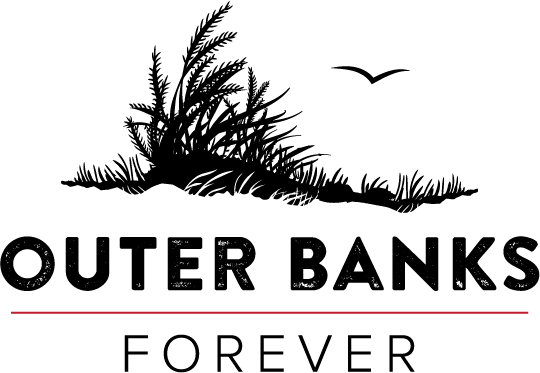
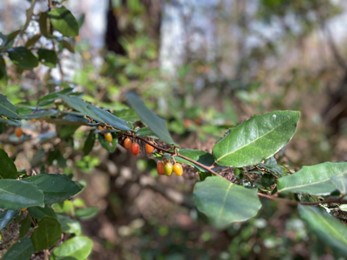
I am so glad to see this article. More information needs to be provided to private landowners on removing thorny olive bushes. I have spent two years trying to remove this invasive but it seems to be a loosing battle because of neighboring hedges and root sprouts! What herbicides did you use/recommend? Manual removal is just too hard on an acre of land in Kitty Hawk. Thanks.
Thank you for your feedback, Nancy! We will ask our park partners about your question.
Thank you for the follow up.
My pleasure, Nancy! Just sent you an email with a response to your question 🙂